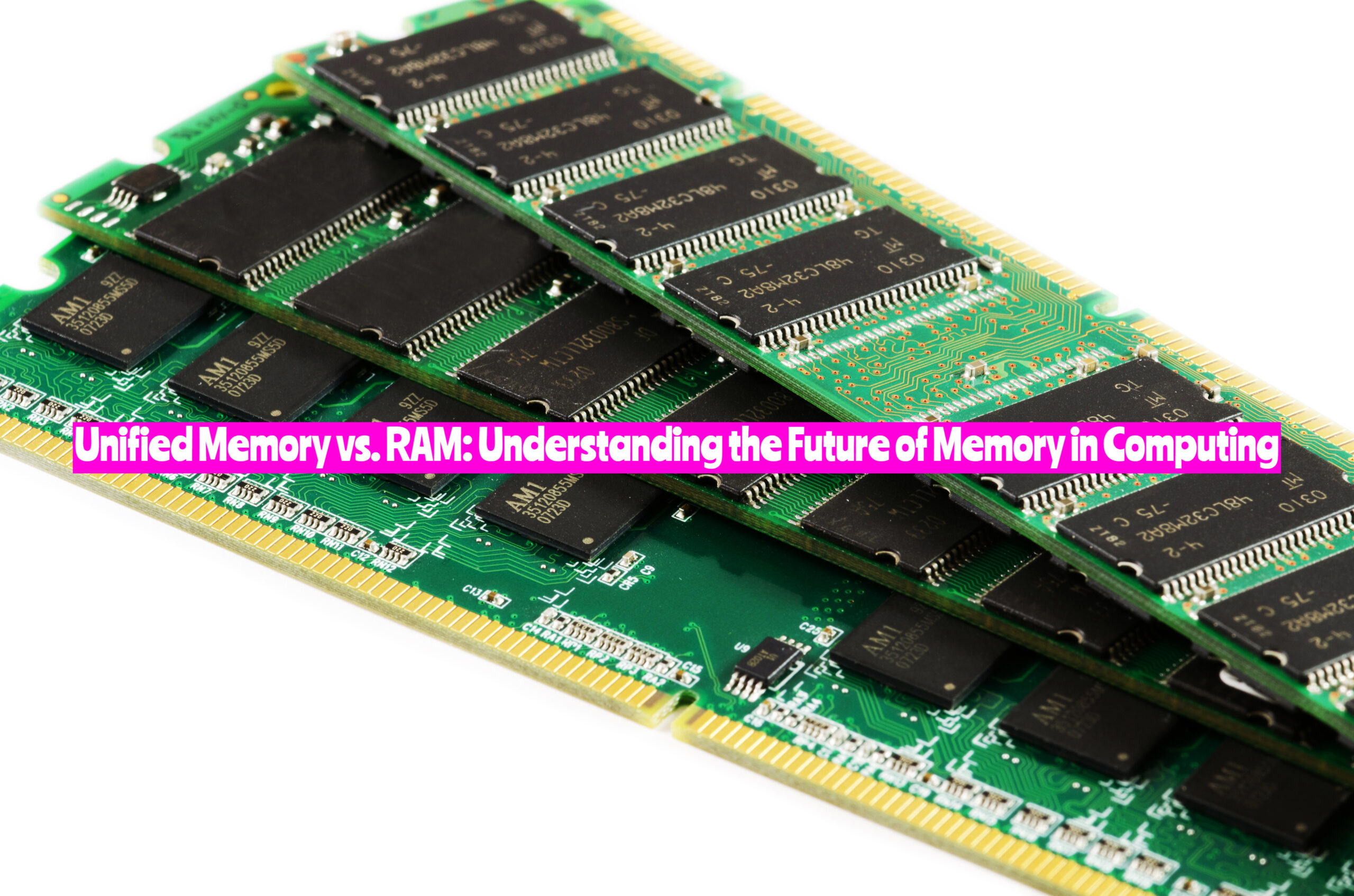Your cart is currently empty!

Unified Memory vs. RAM: Understanding the Future of Memory in Computing
Memory is a crucial part of any computing device as it affects overall performance and user experience. As technology continues to evolve, consumers and professionals alike are frequently confronted with new terms and specifications. Among these emerging concepts are ‘unified memory’ and ‘RAM’ (Random Access Memory). In this article, we’ll explore the differences between unified memory and RAM, their respective roles in computing systems, and how they are shaping the future of electronics.
An Overview of RAM
RAM, or Random Access Memory, is a familiar term to most computer users. It is often considered the primary working memory of a device. The role of RAM is to temporarily store data and enable fast access to it when needed, whether it’s in a smartphone, laptop, or desktop computer. The higher the RAM capacity, the more applications and tasks a device can perform simultaneously without experiencing a slowdown in performance.
There are two main types of RAM: DRAM (Dynamic Random Access Memory) and SRAM (Static Random Access Memory). DRAM is more commonly used in consumer electronics due to its lower cost and higher storage density, while SRAM is faster but more expensive, making it suitable for high-performance applications like cache memory.
Introduction to Unified Memory
Unified memory, also known as shared or hybrid memory, is an emerging technology that involves managing memory resources in a way that makes them concurrently accessible by multiple components of a system, such as the CPU (Central Processing Unit) and GPU (Graphics Processing Unit).
In a traditional computing system, the CPU and GPU have separate memory spaces (i.e., RAM for the CPU and VRAM for the GPU). Each processor can only access its respective memory, leading to challenges when dealing with large, shared datasets or graphics-intensive tasks.
Unified memory aims to bridge this gap by providing a single memory pool accessible by all system components, facilitating seamless data transfers and improved overall performance.
Comparing Unified Memory and RAM
While both unified memory and RAM serve the purpose of temporarily storing and managing data, there are several key differences between the two:
1. Accessible Components
In a traditional RAM configuration, the CPU and GPU each have separate memory spaces, limiting the data flow between the two. With unified memory, both the CPU and GPU can access a single shared memory pool, enabling a more efficient exchange of data and improved synchronization.
2. Memory Allocation Efficiency
Separate memory spaces can result in inefficient usage and fragmentation of system resources due to under-utilization or duplication of data. Unified memory allows for a more flexible and efficient allocation of memory resources, as all components can access a common pool, reducing instances of wasted space.
3. Performance and Scalability
Because unified memory allows for seamless sharing and reallocation of memory among system components, it can potentially yield improved performance and scalability, especially in scenarios involving heavy data processing or graphics-intensive tasks.
4. Complexity and Integration
Implementing unified memory can be more complex than traditional separate memory configurations, as it requires specialized hardware and software to manage and share memory resources effectively. However, several technology companies, such as NVIDIA and Apple, are actively investing in unified memory architectures for their products, paving the way for more widespread adoption.
The Future of Memory in Computing
Unified memory is still an evolving technology, but its promise of seamless data sharing, improved efficiency, and enhanced performance make it a compelling option for the future of computing. As more technology companies adopt and refine unified memory architectures, we can expect to see greater integration of this technology in a wide range of consumer and enterprise electronics, ultimately transforming the way we interact with our devices.
In Conclusion
Understanding the differences between unified memory and RAM can help users and professionals make more informed choices about the technology they invest in. As unified memory continues to develop and become more mainstream, it offers exciting possibilities for the future of computing and memory management in an increasingly data-driven world.
Leave a Reply